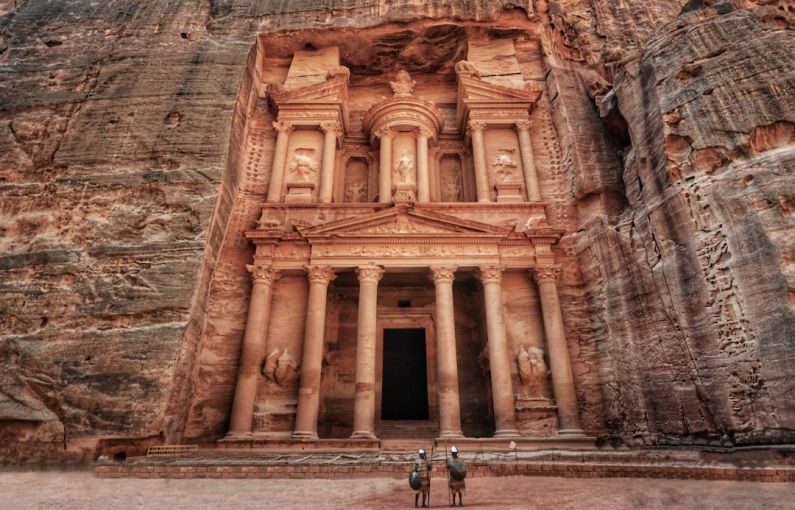Nestled in the rugged desert terrain of southern Jordan, the ancient city of Petra stands as a testament to human ingenuity and architectural prowess. Known as the “Rose City” due to the rosy hue of its rock-cut structures, Petra is a historical marvel that continues to captivate visitors from around the world. From its mysterious origins to its eventual rediscovery by the Western world, Petra’s allure lies not only in its breathtaking beauty but also in the enigmatic stories that shroud its past.
**Unveiling the Mysteries of Petra**
The history of Petra dates back to the 4th century BC when it was established as the capital of the Nabatean Kingdom. The Nabateans, an ancient Arab civilization, harnessed the natural beauty of the surrounding landscape to carve elaborate buildings and tombs into the rose-colored sandstone cliffs. The city flourished as a vital hub for trade, connecting the Arabian Peninsula, Egypt, and the Mediterranean region.
**The Iconic Treasury**
One of the most iconic structures in Petra is the Treasury, also known as Al-Khazneh. This magnificent facade, with its intricate carvings and towering columns, has captured the imagination of travelers and explorers for centuries. Legend has it that the Treasury once held hidden treasures, hence its name. Despite numerous attempts to uncover its secrets, the Treasury remains a symbol of Petra’s mystique and grandeur.
**The Siq: Gateway to Petra**
To reach the Treasury, visitors must first navigate through the Siq, a narrow gorge that winds its way through the cliffs. As sunlight filters through the towering walls, casting a warm glow on the ancient passageway, a sense of anticipation builds with each step. The Siq serves as a dramatic entrance to Petra, setting the stage for the awe-inspiring sights that lie beyond.
**The Royal Tombs and Monastery**
Beyond the Treasury, Petra reveals a treasure trove of archaeological wonders. The Royal Tombs, with their imposing facades and intricate details, stand as a testament to the wealth and power of the Nabatean rulers. Further afield, the Monastery looms large atop a hill, its massive facade carved into the rock face. The journey to reach the Monastery is arduous but rewarding, offering panoramic views of the surrounding desert landscape.
**Rediscovery and Preservation**
Despite its prominence in ancient times, Petra was eventually abandoned and fell into obscurity. It wasn’t until the early 19th century that Swiss explorer Johann Ludwig Burckhardt stumbled upon the hidden city, sparking renewed interest in its history and preservation. Today, Petra is a UNESCO World Heritage Site, attracting visitors from across the globe who come to marvel at its architectural splendor and rich cultural heritage.
**Embracing the Past: Petra’s Enduring Legacy**
As visitors wander through the ancient streets of Petra, they are transported back in time to an era of trade, innovation, and cultural exchange. The city’s intricate carvings, elaborate temples, and grand amphitheater offer a glimpse into the vibrant life of the Nabateans and their enduring legacy. Petra serves as a poignant reminder of the resilience of human civilization and the enduring power of cultural heritage to unite and inspire.
**In Conclusion: Petra’s Timeless Beauty**
In a world marked by constant change and upheaval, Petra stands as a timeless symbol of human creativity and perseverance. Its rock-cut architecture, intricate carvings, and rich history continue to captivate and inspire all who visit. As we marvel at the wonders of Petra, we are reminded of the enduring legacy of ancient civilizations and the importance of preserving our shared heritage for future generations to cherish and learn from.





